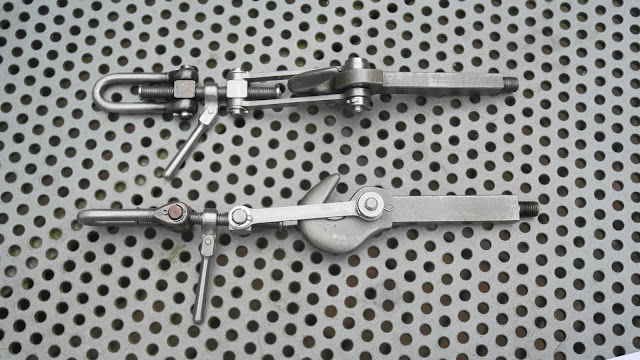The screw couplings for the loco were a nice project for starting up after the summer holidays.
I couldn't find a drawing of a newer pair, so these old style drawings were used a starting point for my couplings.
I started with the linkage; a nice job for the CNC milling machine.
The hooks were made a long time ago, when the main frame was made in 2007. With the CNC machine the linkage on the hook was milled in one set-up. They are made from 3mm thick mild steel.
Drilling a 1.2mm hole for taking up the split pin. This pin wil connect the links to the hook.
These links are 46 mm long. In these small details you'll find that 7¼" gauge is quite big.
From square 8 mm mild steel the block was made. One half will have M5 thread, the other M5L (left handed thread).
I've bought nice stainless steel harps, but they were to long. New ones had to be made. A 9.5mm steel rod was salvaged from a old printer, which was very nice materiale to turn.
With a large radiused tool it was turned down to 4.4 mm.
The original stainless steel harps that proved to be too long and a bit too thick. The new ones under production.
Filing the ends with the aid of some filing buttons.
Outer shape that needs to be rounded off with a small file.
Afer completing the filing and sanding the harp is bend.
The handle for screwing the coupling
Most of the parts completed
An impression of the size. It only weighs 93 gramms.
The final coupling; blackened with a propane flame and than dipped in motor oil.
End caps on the spindle, so the parts wil not come a part.
The complete set.

A coupling on discarded wagons in Hombourg (Belgium)
The real coupling on a preserved T3 in Heilbronn. (Nice detail: this loco is being rebuild, but under the frames you see a part of 7¼" track on the shop floor)



















